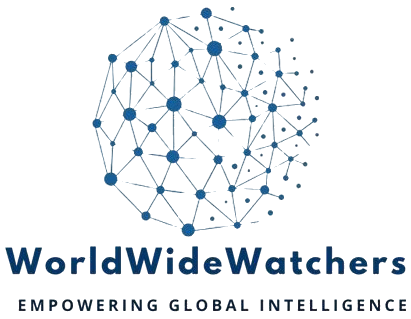
Counter-Terrorism
-
Insight [G, Confidence: Moderate]: The ongoing conflict between Hamas and Israel, exacerbated by U.S. diplomatic pressures, highlights the persistent geopolitical instability in the region, with both parties entrenched in their positions despite international mediation efforts.
Credibility: The report is sourced from reputable outlets like Newsweek and Al Jazeera, providing a balanced view of the situation.
Coherence: The insight logically fits the historical pattern of conflict in the region and aligns with previous diplomatic efforts.
Confidence: Moderate, due to the complex and evolving nature of Middle Eastern geopolitics. -
Insight [S, Confidence: High]: Misinformation and propaganda continue to play a significant role in the Israeli-Palestinian conflict, as evidenced by the rapid spread and subsequent debunking of false narratives regarding Israeli actions.
Credibility: The information is corroborated by multiple media outlets, enhancing its reliability.
Coherence: The insight is consistent with known strategies of information warfare used by various actors in the conflict.
Confidence: High, given the historical prevalence of misinformation in this context.
Sentiment Overview
The emotional tone remains tense and negative, with high levels of frustration and hostility on both sides, compounded by international diplomatic pressures.
Policy Relevance
Governments and agencies should prioritize diplomatic engagement and support for credible information dissemination to counteract misinformation and reduce tensions.
Regional Focus
-
Insight [R, Confidence: Moderate]: The U.S. military actions in the Caribbean, framed as anti-narcotics operations, may exacerbate regional tensions and provoke responses from affected nations like Venezuela.
Credibility: The report from Al Jazeera is credible, though the narrative may reflect geopolitical biases.
Coherence: The actions align with historical U.S. foreign policy strategies in Latin America.
Confidence: Moderate, due to potential biases in reporting and the unpredictable nature of geopolitical reactions. -
Insight [G, Confidence: High]: Ethiopia’s decision to operationalize the GERD without a binding agreement with downstream countries poses a significant geopolitical risk, potentially destabilizing relations with Egypt and Sudan.
Credibility: The report is from CBS News, a reliable source, and aligns with ongoing regional disputes.
Coherence: The insight is consistent with historical tensions over Nile water rights.
Confidence: High, given the longstanding nature of the dispute and the strategic importance of the Nile.
Sentiment Overview
There is a heightened sense of tension and apprehension, particularly concerning U.S. actions in the Caribbean and Ethiopia’s unilateral moves regarding the Nile.
Policy Relevance
Policymakers should engage in multilateral diplomacy to address regional disputes and mitigate the risk of escalation, particularly in water resource management and military interventions.
Cybersecurity
-
Insight [S, Confidence: High]: The abuse of remote access tools remains a critical pre-ransomware indicator, underscoring the need for robust cybersecurity practices and monitoring.
Credibility: The insight is based on research from Cisco Talos, a reputable cybersecurity entity.
Coherence: The finding aligns with known cybersecurity threats and tactics used by cybercriminals.
Confidence: High, due to the detailed and consistent nature of the research findings. -
Insight [R, Confidence: Moderate]: The data breach at Wealthsimple highlights vulnerabilities in supply chain security, emphasizing the importance of securing third-party software.
Credibility: The report is corroborated by multiple cybersecurity sources, enhancing its reliability.
Coherence: The incident fits the broader trend of supply chain attacks in the cybersecurity landscape.
Confidence: Moderate, as details about the third-party involvement remain limited.
Sentiment Overview
The cybersecurity landscape is marked by a sense of urgency and caution, with ongoing threats necessitating vigilant security measures.
Policy Relevance
Organizations should prioritize implementing multi-factor authentication, monitoring remote access, and securing supply chains to mitigate cybersecurity risks.
National Security Threats
-
Insight [G, Confidence: Moderate]: Progress in Iran’s nuclear site inspections could signal a potential easing of tensions, though the geopolitical landscape remains fragile.
Credibility: The information is sourced from Al Jazeera and aligns with ongoing international diplomatic efforts.
Coherence: The insight is consistent with historical patterns of negotiation and conflict in the region.
Confidence: Moderate, due to the unpredictable nature of Iran’s international relations. -
Insight [R, Confidence: Low]: The political dynamics within the U.S., particularly regarding the Democratic Party’s internal conflicts, may have broader implications for national security and governance.
Credibility: The report from The New Republic provides a speculative analysis of political maneuvers.
Coherence: The insight reflects ongoing political tensions but lacks concrete evidence of direct national security implications.
Confidence: Low, given the speculative nature of the analysis.
Sentiment Overview
The national security environment is characterized by cautious optimism regarding Iran, contrasted with domestic political tensions in the U.S.
Policy Relevance
Governments should continue diplomatic engagement with Iran while monitoring domestic political developments that could impact national security strategies.
ℹ️ Legend – Analytic Tags & Confidence Levels
- [G] Geopolitical Risk: International power shifts, diplomatic tension, or alliance impact.
- [S] Security/Intelligence Signal: Operational or tactical insight for defense, police, or intel agencies.
- [R] Strategic Disruption: Systemic instability in digital, economic, or governance structures.
Confidence Levels Explained
- High: Strong corroboration and high reliability.
- Moderate: Some verification; potential ambiguity.
- Low: Limited sources, weak signals, or early-stage indications.

